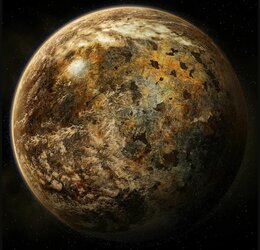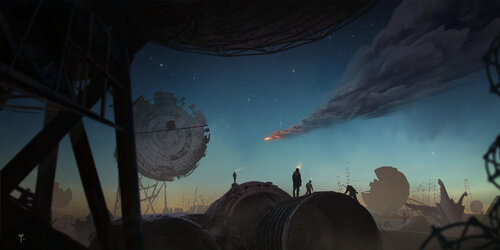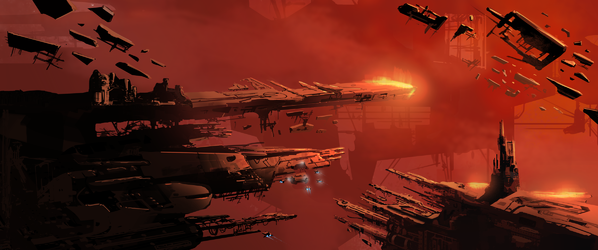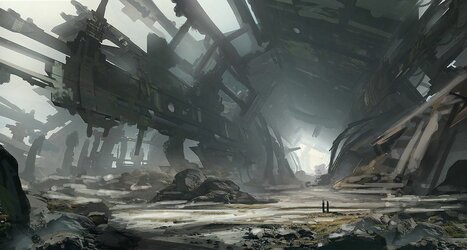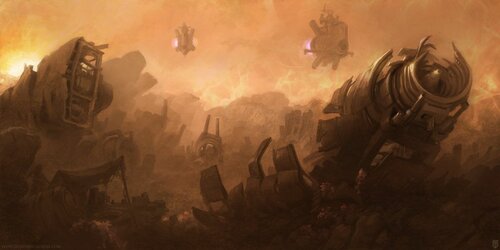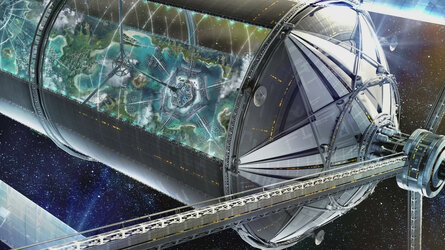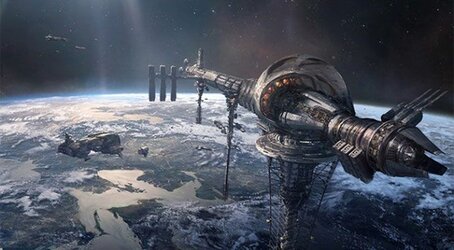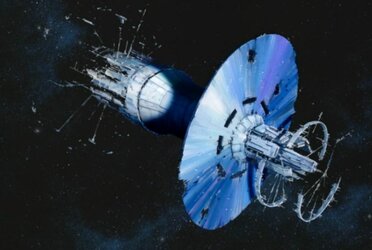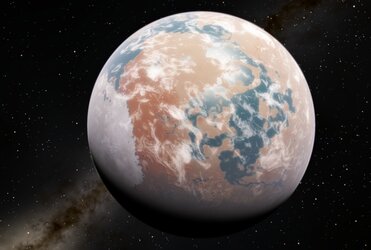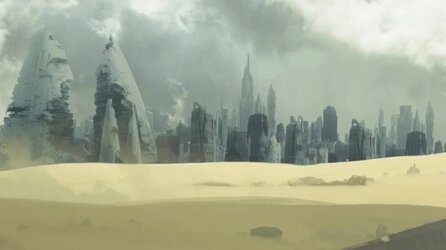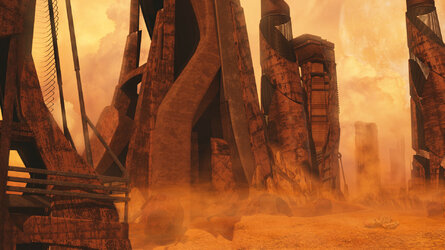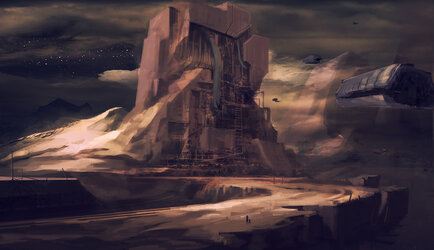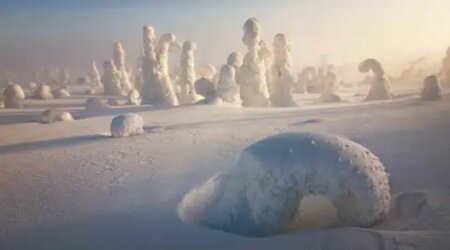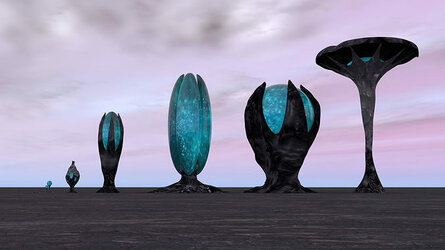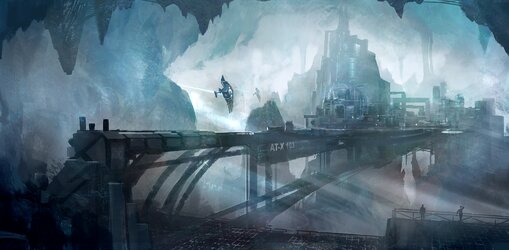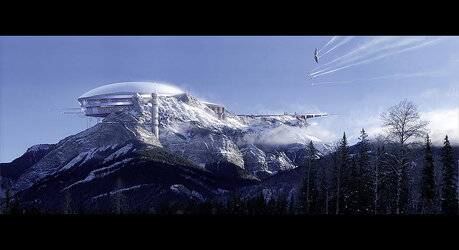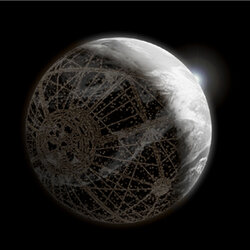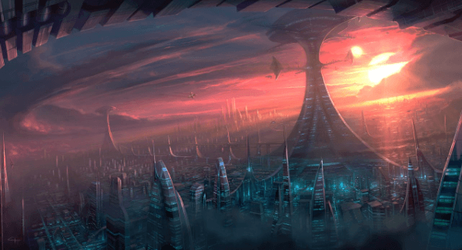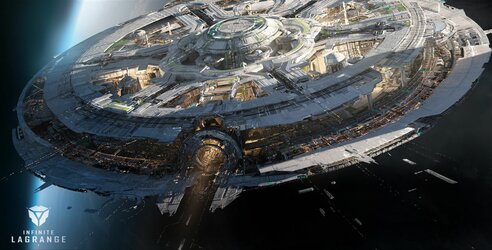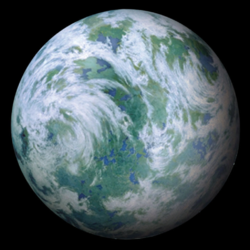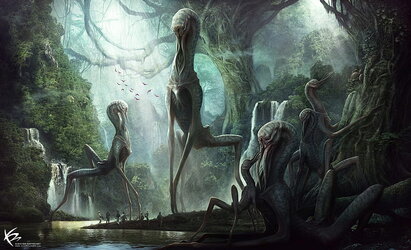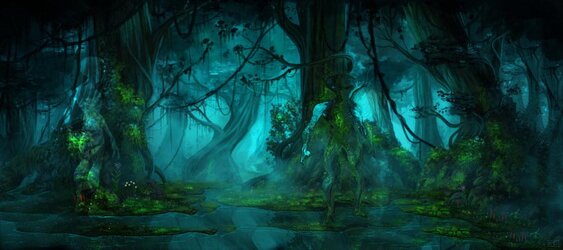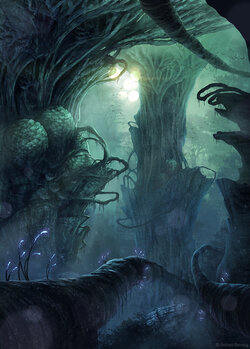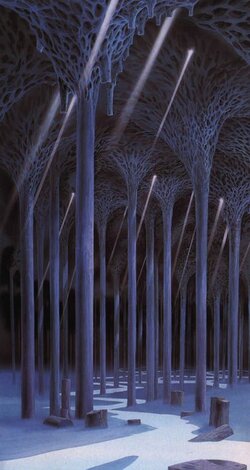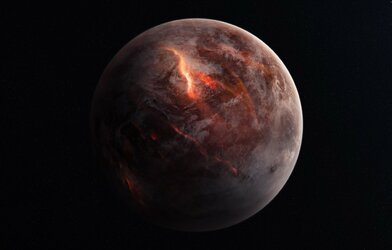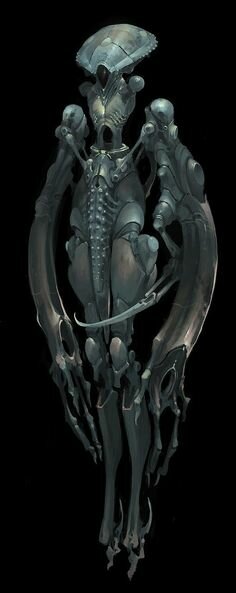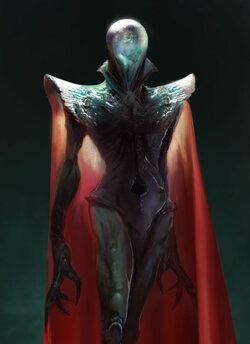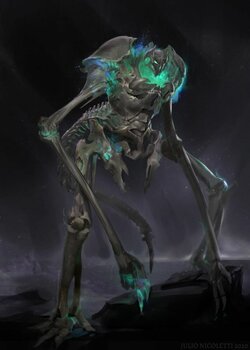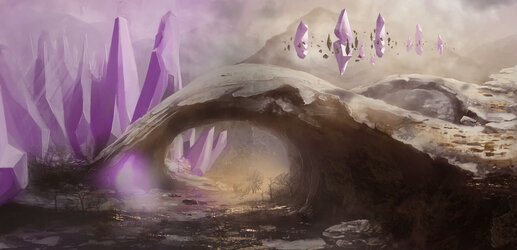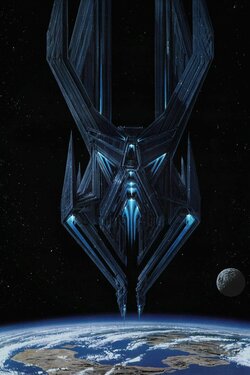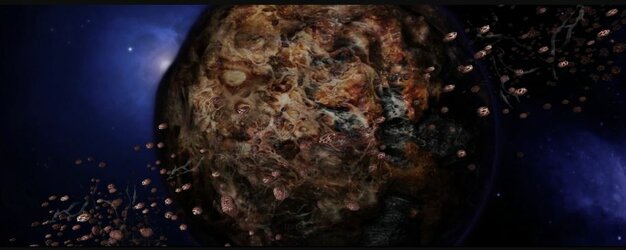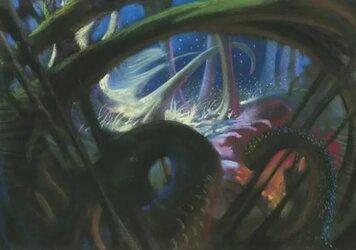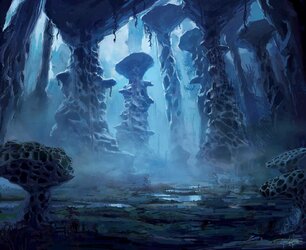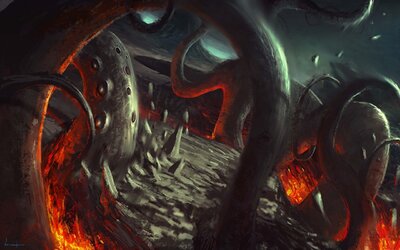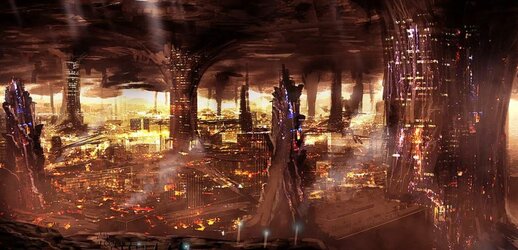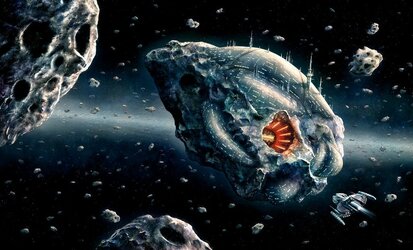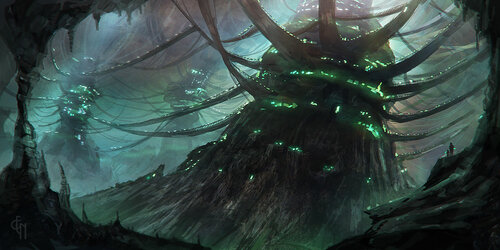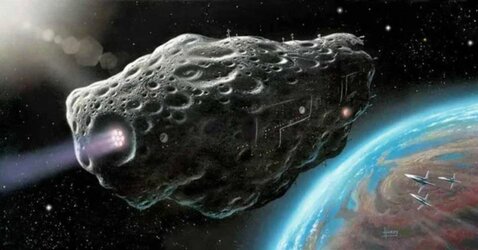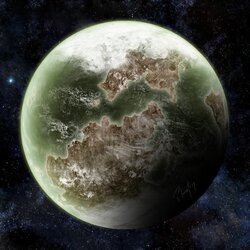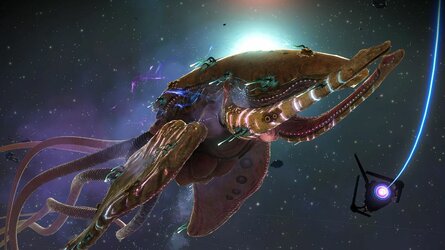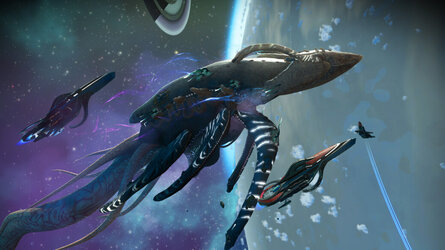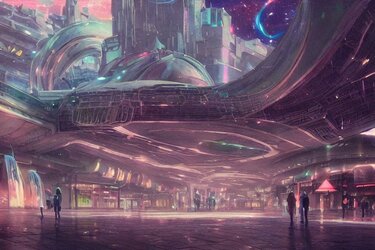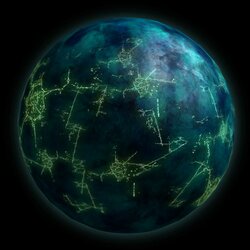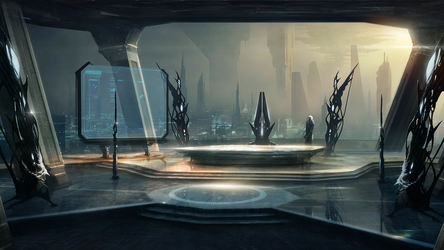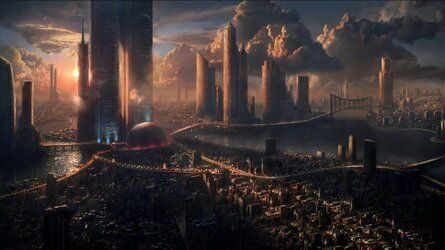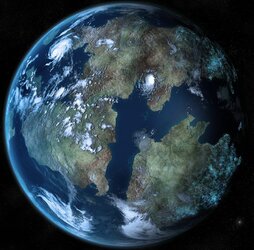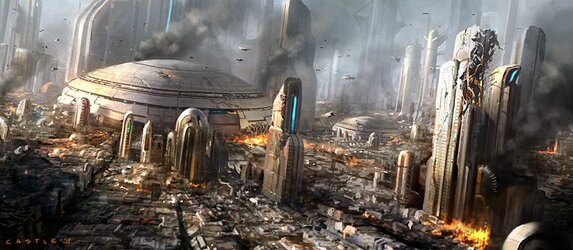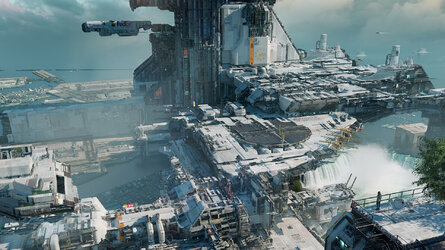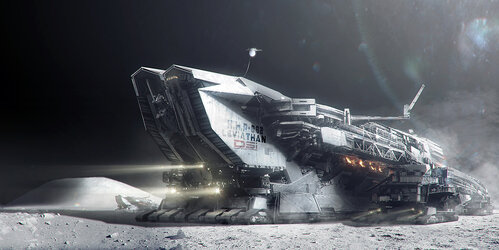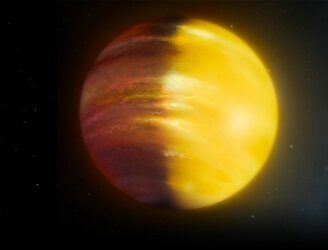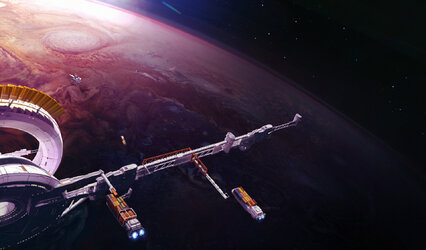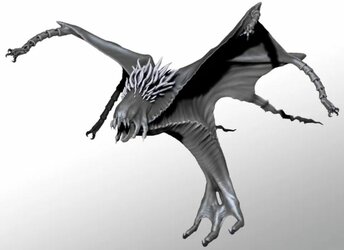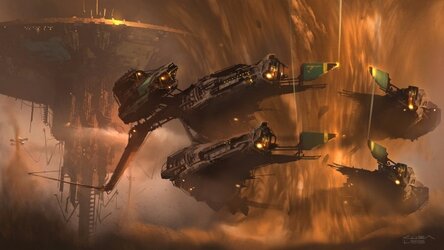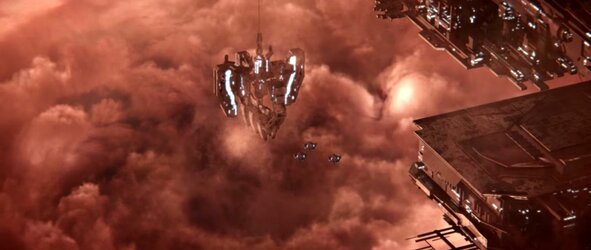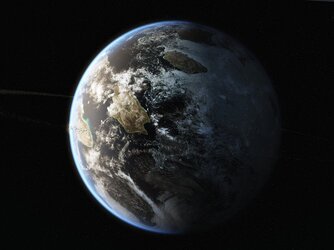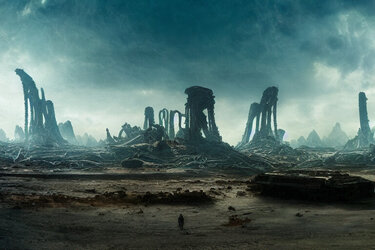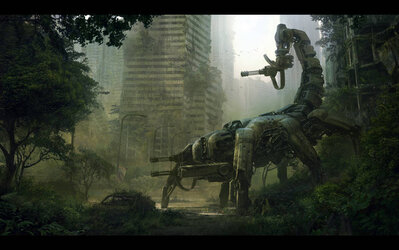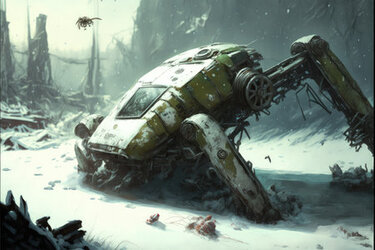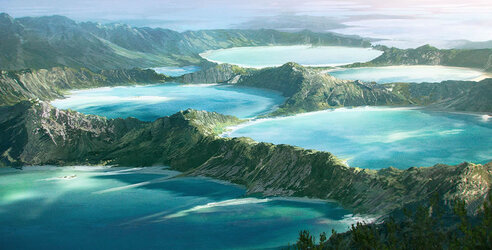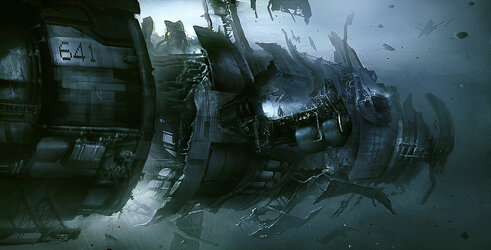Chalarm
Galactic Story Teller
- Joined
- Jan 1, 2020
- Location
- Milky Way Galaxy
> DECRYPTED INFORMATION FROM HEPHAISTUS PLANETARY DATABASE--
[LOADING:SHIP_DIRECTORY<<<<<<<<<<<<<<<<]
[LOADING:INFORMATION_PACKET<<<<<<----------]
> COMPLETE
PLANET – SHAL’TARRA – KOLESH HOMEWORLD – WORLD OF FLESH
-Satellite image of Shal'Tarra-
Here, have an Easter egg
Shal’Tarra is the barren homeworld of the enigmatic Kolesh, a mammalian race that has mastered bioengineering to the point that something organic and mechanical are nearly one and the same, fusing metals and flesh. Where other species became prolific in material sciences and physics, the Kolesh spent millennia researching and mastering the biological building blocks of organic life until their machines and tools became almost indistinguishable from a living organism. While the appearance of their cities on colonized worlds -which appear to sprout from the ground in an amalgamation of flesh, metal and chitinous growths- are off putting to many other species of the galaxy, the Kolesh don't mind the often grisly looking sight of their transformed landscapes, having become accustomed to the appearance and some of their race even finding the sight of purely metal structures unusually sterile in their own right.
The planet surface of Shal'Tarra consists of multiple large continents of rocky, mountainous terrain, turning to arid desserts at the center of the barren landmasses. The majority of plant and animal life on the planet lives on the smaller islands and coastline of the red, nutrient rich oceans covering the planet. Kolesh civilization began from the edges of these life giving oceans where few rivers fed into them from the mainland, eventually expanded along the great ravines of the surface that protected them from the more extreme weather conditions that hit the inland regions. Since then, the dominant Kolesh species has transformed much of the planet.
Huge underground passageways now crisscross the deserts and mountainous expanses to connect cities across the great barren lands, dug out by large wormlike creations of the Kolesh Geneticists. Waves of their large organic machines still wander the surface fertilizing more areas of the planet for expansion of their empire.
-Drone image of a Kolesh facility built along the edge of a ravine city-
–CULTURE AND TECHNOLOGY–
The Kolesh are a bipedal species which have reddish hairless skin with long gangly limbs. Their arms nearly touch the floor when they hunch, wrists ending with wide flat hands still prominent from when their evolutionary ancestors dug burrows. Their most prominent facial feature is a starfish-like protruding appendage on the center of their face which doubles as both a nasal passage and mouth, flanked with small sunken eyes and ears which tuck into the side of their head. These characteristics explain the reason for a keen sense of smell among the species but outweighed by a poor eyesight in comparison to other races, which has caused them to rely more on touch and smell rather than their visual sense.
The Kolesh's mastery of bioengineering has been mostly reserved for making new creations to serve a specific purpose rather than altering themselves, keeping any alterations of their own genetic material to a minimum. The one major change made among the Kolesh physiology is to give themselves what can only be described as a 'port' along the nape of their neck which gives them the ability to interface themselves with some of their more advanced organic machinery. More common tools and organic machines do not require such a connection to use, the Ports only intended when needing to take control of the machine such as vehicles or weapons. This means of utilizing organic matter and linking with their creations has caused some confusion to outsiders as the space suits and armour that the Kolesh wear gives an altered appearance of their natural bodies. Visible musculature and bone frameworks mold to the wearer, making it easy to mistake them for a completely different species while wearing the parasitic pieces of technology.
--unknown Kolesh device with port connection–
Personality wise the Kolesh are best described as narcissistic, lethargic, perfectionists. The species' influential Geneticists always believe they can complete any task with one of their creations and give little consideration of the organic machines they build but for the tasks they can complete. Factories are filled with a lumbering biomechanical subspecies, built specifically to take care of the jobs the Kolesh don't personally want to do, the organic machines receiving a kick of dopamine whenever they complete a task, performing on instinct and drip fed from a nutrients sac that are regularly refilled. Unnecessary features such as pain and long term memory have no need in the limited brain function of the more complicated organic machines, many other Kolesh creations just consisting on collections of carefully crafted cells working together.
The Kolesh's use of organic matter in their technology has created an interesting effect on how they perceive sentience, in which living creatures are seen only as incredibly advanced machinery much like one would compare sentient AI to a coffee maker. The Kolesh think no more of their seemingly living tools as one would consider a blinking light on their computer a sign of awareness. Of course they still see themselves at the top of this hierarchy, always looking down on any species that find their mastery of organic matter to be off putting or an existential crisis.
-A Kolesh living machine wandering the halls of a facility-
Here, have an Easter egg
The Kolesh are always interested in gathering new DNA from far off colonies or new races to experiment with and find more ways to boost the efficiency of their many living machines, utilizing the many unique chemical reactions that take place in living beings across the galaxy. They are known to trade often with the Archive Collectors* to gain access to their many thorough databases of generic material they hold on their library worlds. Another aspect of the Kolesh developing machines based on the best parts of generic code of other sentient species they trade with is thecreation of uncorroborated rumours that surround the enigmatic geneticists. A fear has developed among some that the Kolesh capture races and mutate them into the same monstrosities that work in their facilities. This however goes against the bioengineers mandate of creating their own organic machines from scratch. It is much easier method for them to grow something new with all the features they could desire rather than reorganizing the functions of something already in existence.
-Kolesh device for
Here, have an Easter egg
-----------------------
Footnote:
*see related material on the Archive Collectors and their library worlds
> COMMUNICATION ENDED
Last edited:

 Your support makes Blue Moon possible (Patreon)
Your support makes Blue Moon possible (Patreon)